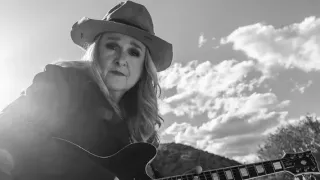February 13, 2024
'Diva' Film Soprano Wilhelmenia Wiggins Fernandez Smith Has Died at 75
READ TIME: 2 MIN.
Wilhelmenia Wiggins Fernandez Smith, a renowned soprano known for her performance in the 1981 French cult-classic film "Diva" and who sang through the U.S. and Europe during her operatic career, has died at age 75.
Funeral services were held Friday for Fernandez Smith at a church in Lexington, Kentucky, where she had moved after residing for years in her native Philadelphia. She died of cancer Feb. 2 at her home in Lexington, daughter Sheena Maria Fernandez told The Philadelphia Inquirer.
Billed as Wilhelmenia Wiggins Fernandez, she opened the movie directed by Jean-Jacques Beineix wearing a white gown and singing in an aging theater the aria "Ebben? Ne andrò lontana" from the opera "La Wally." It became the signature aria of her 25-year career that took her to the great opera houses in Europe and made her the centerpiece of gala occasions.
She graduated from the Academy of Vocal Arts in Philadelphia and continued her education at the Juilliard School in New York. Filmmakers for "Diva" approached her while she sang "La boheme" in Paris, leading to a film shoot for the thriller that would change her life, the Inquirer reported.
"The film gave me an exposure that I could not have imagined, and I had to catch up with my own fame when the floodgates opened to do countless operas," she recalled. "My repertory simply wasn't that great, and there was so much expectation to do everything well."
Fernandez Smith spent more time in Kentucky after her now-late husband, Andrew Smith, returned in the 1990s to the area where he grew up to direct the voice program at Kentucky State University, the Lexington Herald-Leader reported. In Lexington, she was known as a special education teacher at an elementary school and a member of Main Street Baptist Church, where she worked with the children's music program.
"Wilhelmenia was always a very quiet person and did not crave the limelight," Everett McCorvey, director of the University of Kentucky Opera Theatre, told the Lexington newspaper. "Although the limelight craved her."
In addition to her daughter, Fernandez Smith's survivors include a sister, Kerr Brothers Funeral Home of Lexington said on its website.
Watch Wilhelmenia Wiggins Fernandez Smith sing the aria "Ebben? Ne andrò lontana" from the opera "La Wally" in the 1981 film "Diva."






